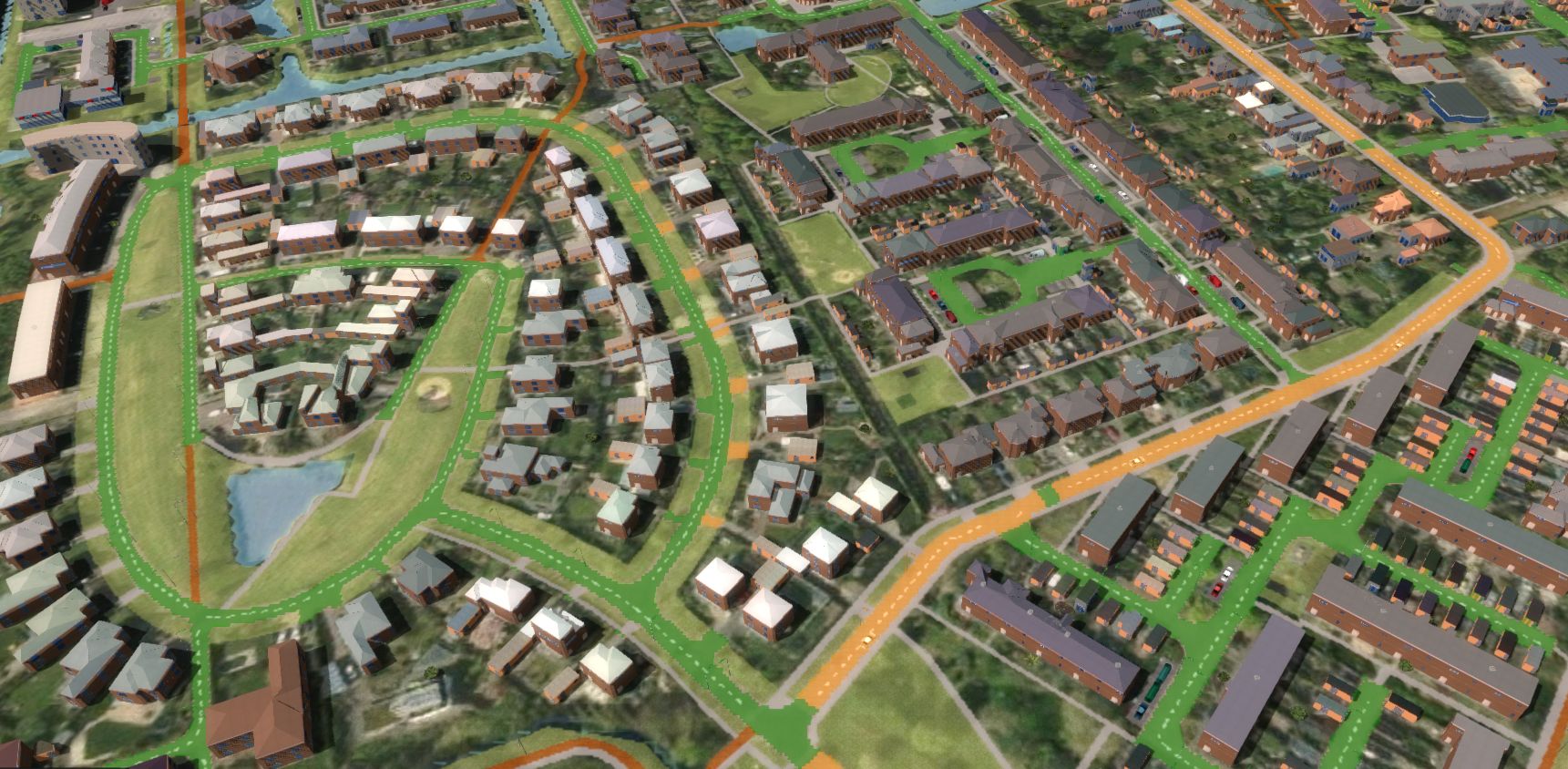By looking ahead, we can better respond to future challenges. Although traditional analyses are valuable, they often fall short of fully understanding the impact of interventions in the built environment. Developments such as the Internet of Things (IoT) and artificial intelligence (AI) are paving the way for new technologies to perform accurate simulations. In a 'digital twin' , these technologies come together for clear insights into today's reality and morgen.
A digital twin, or digital twin, is a digital representation of physical reality. By unifying different data sources, you can build a virtual copy to better understand the real world. For example, you can carry out simulations to test how a machine functions under certain conditions or what the consequences are of an intervention in public space on quality of life, mobility or air quality, among other things.
Predict reality in a simulation
The digital twin technology was first used by the American space agency NASA to simulate the conditions on board the manned Apollo 13 mission. With the rise of IoT, AI, edge computing and big data analytics, the development of the digital twin accelerated. IoT provides the necessary sensor data. This data is in turn used to create an AI model that then allows future behavior to be simulated.
The concept is also on the rise in geopractice. A 'geo digital twin' forms a platform for designing, validating, applying and maintaining the entire life cycle of the built environment. This allows you to model interventions and incidents in the field and map out the effects and consequences three-dimensionally.
Not science fiction: the concrete applications
A digital twin allows the simulation of different scenarios, in which peripheral phenomena are also mapped. The application possibilities are endless. These are just a few examples:
- climate adoption: calculating the impact of additional vegetation on urban heat islands.
- mobility: simulating the effects of mobility measures such as a speed reduction, changes to traffic lights or the introduction of one-way streets;
- spatial planning: mapping the impact of redevelopment on parking pressure and accessibility;
- environment: measuring the effect of the redevelopment of a park on air quality and noise pollution;
- insurance: determining the possible damage and the effect on the insurer's portfolio if, for example, a certain district were to flood;
- disaster prevention and control: determining the optimal location of a high-risk activity or developing an evacuation plan for various doomsday scenarios;
- energy management: simulating a network operation, measuring the impact of the failure or upgrading of production capacity or modelling supply and demand in local energy communities.
(read more below the image)

Image: evaluating mobility measures in a digital twin
Data as the foundation of the virtual world
The foundation of a geo digital twin is a three-dimensional basemap of the environment that is continuously up-to-date. The data must be qualitative, complete and up-to-date in order to obtain a reliable digital twin. The basic 3D model is built with available open data sources. To achieve this, access to standardised and interoperable data is essential.
Standards such as those of OGC (Open Geospatial Consortium) and INSPIRE ensure a uniform structure and better interchangeability of geographical data.
Securely exchanging data in a data space
For certain applications, open data sources need to be supplemented with additional datasets for greater completeness, higher quality and a more precise level of geometric detail.
Suppose you want to map out the flood risk of sewers. Then data from the sewer network are indispensable.
Data spaces provide a shared ecosystem in which governments and businesses can share data securely and in a controlled manner. Combining these sources creates a rich, dynamic digital representation of the physical world
Seamless integration of different data sources
In order to make accurate simulations, the topicality of the 3D database is essential. Other data systems can be integrated to keep the basic model up-to-date. During the design phase of a building or infrastructure, for example, you can integrate the Building Information Model (BIM) into the digital twin. This gives you a good picture of the future building in its spatial environment and allows you to simulate and optimise the entire construction process: from material supply to construction, delivery and maintenance to even demolition and recycling.
(read on below the video)
Video: simulation of the impact of new construction on heatstress
Gain faster, more and better insights thanks to GeoAI
Earth observation data can be used to detect changes in the environment. By integrating this data into the digital twin in an innovative way, the time between an effective change in the field and its availability in the digital twin is shortened.Thanks to GeoAI, the timeliness, availability and accuracy of information from Earth observation images have greatly improved.
In the future, even a quasi-real-time update of the digital twin will be possible thanks to increasingly frequent image recordings.
The possibilities of a geo digital twin are far-reaching, that much is clear. They allow us to make more accurate decisions and take precautionary measures based on advanced simulation models. However, the reliability of these simulations always depends on the quality, completeness and timeliness of the data.
Do you also want to get started with a Geo Digital Twin? Contact us for a demo or advice for a plan of action.

Steven Smolders
Technology Director at GIM
Steven.smolders@gim.be

